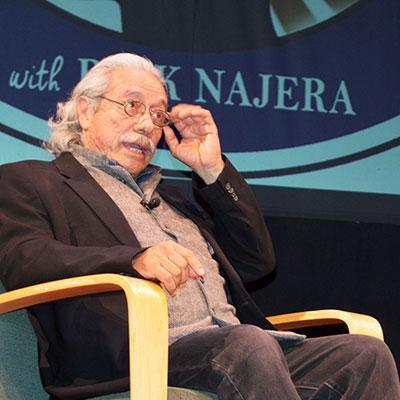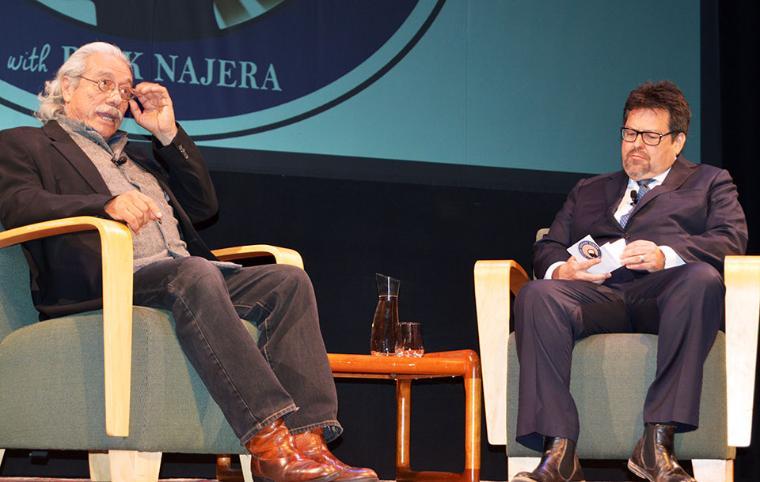
Summit Success

The first Latino Education Summit: Silicon Valley started a conversation about the challenges, opportunities, and promises of the educational pipeline for Latino children, parents, and the working poor.
Arcadio Morales
The festive sound of Mariachi music greeted the over 500 teachers, parents, students, principals, superintendents, and administrators arriving at Santa Clara University to attend the first Latino Education Summit: Silicon Valley. April 30, the day of the Summit, coincided with el Día del Niño (the Day of the Child), honoring those for whom the conference was ultimately about, Latino children.
The goal of the Summit was to begin a conversation about the challenges, opportunities, and promises of the educational pipeline for Latino children, parents, and the working poor. Tailored sessions for students, parents, and teachers focused attention on issues critical to student success: Early Childhood Education, Alleviating the Teacher Shortage, Integrating ELL (English Language Learners) Students in General Education, Latino Administrators: Redefining Leadership, and Parent Empowerment, to name a few.
After an invocation by Bishop Patrick J. McGrath (Diocese of San Jose), Dr. David Lopez from The Foundation for Hispanic Education set the context for the day, stating that Latinos comprise approximately 53 million members of the U.S. population—one in four residents of the U.S. are Latino.He added that 47 percent of the U.S. population speaks a language other than English, and that 51 percent of all California students are Latino.
Our greatest challenge, he said, is that Latino students lag behind non-Latino Whites and Asian Americans on most measures of academic achievement, including test scores and high school and college graduation rates. Ultimately, everyone benefits from an educated Latino population—the valley, state, and nation—because it reduces the educational achievement gap and economic disparity and creates opportunities for Latinos to contribute to society in a number of ways.
One key session of the day featured scholars Dr. Guadalupe Valdes (Stanford University) and Dr. Eugene Garcia (Arizona State University, emeritus) addressing the topic of the Latino education dream. Dr. Garcia emphasized that participation in pre-K programs is imperative for Latino children if they are to become successful students. Access to pre-K programs must be created in Latino communities across the nation.
Both Garcia and Valdes shared their views on the qualities that make effective teachers of Latino students and agreed on the following: A teacher must 1) know the student, her family, community and culture, 2) understand that every student comes with a set of resources that includes her family, community, language and culture, 3) maintain high expectations and not patronize the student by feeling sorry for her and lowering standards, 4) believe that the student can and will learn, 5) be caring and loving with the student.
Dr. Lopez summarized the approach everyone must embrace in order to successfully educate Latino students. He said that it will take ganas, cariño y corazón (strong desire, affection and heart).
The Summit concluded with an ambitious resolution—to double the number of teachers of color in Santa Clara County over the next decade. In a climactic ending, school board members, superintendents, principals, and other administrators marched up on stage to demonstrate their support for and to sign the resolution. As they exited the stage, they proudly announced into a microphone, to the cheers of the audience, their name, position, school and/or district that they represented.
One hour after the Summit’s conclusion, writer, director, author, and comedian Rick Najera hosted his Latino Thought Maker Series show in Mayer Theatre. His guest, actor, director, and social activist Edward James Olmos, spoke about his experiences breaking into Hollywood as a Latino actor and his many roles during an extensive and successful film career.
He spoke passionately about the Latino Film Institute’s Youth Cinema Project that features 4th grade Latino students as filmmakers. This project is motivating Latino students’ academic achievement through filmmaking. What began as an endeavor to give Latino students a voice, developed into a successful project to help Latino students read at grade level and achieve the Common Core State Standards. Research indicates that students, who are not reading at grade level by the 3rd grade, have less of a chance for academic success.
He emphasized that the filmmaking process—generating ideas, writing a story, composing story boards, casting, identifying film shooting locations, directing, producing, and working collaboratively—helps students develop skills in critical and analytical thinking, communication, mathematics, English, and history, among others. After a successful outcome in a school in Southern California, the program has expanded to several other schools in the region. This Youth Cinema Project has recently been adopted locally by the Alum Rock Union School District and will begin in the fall of 2016.